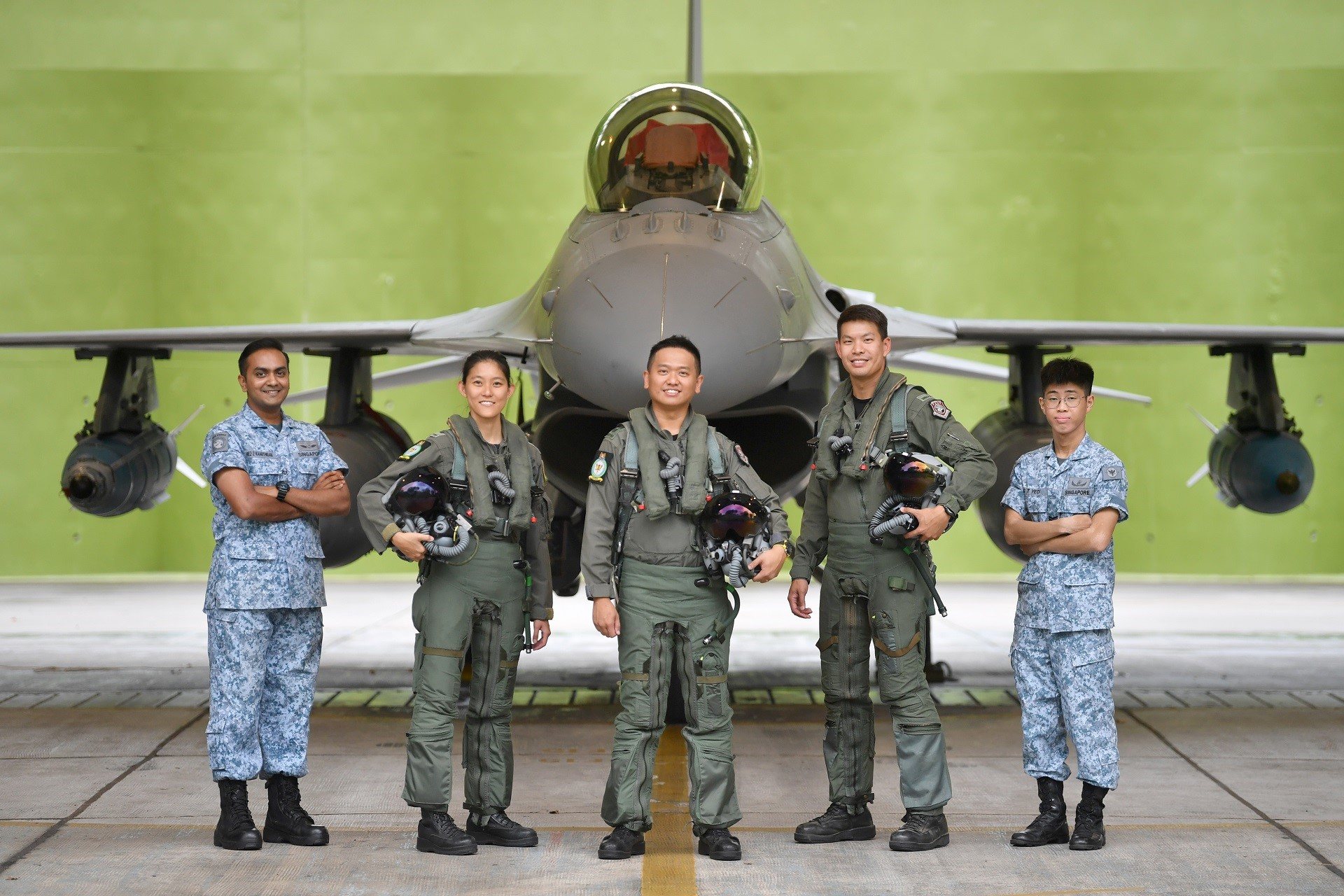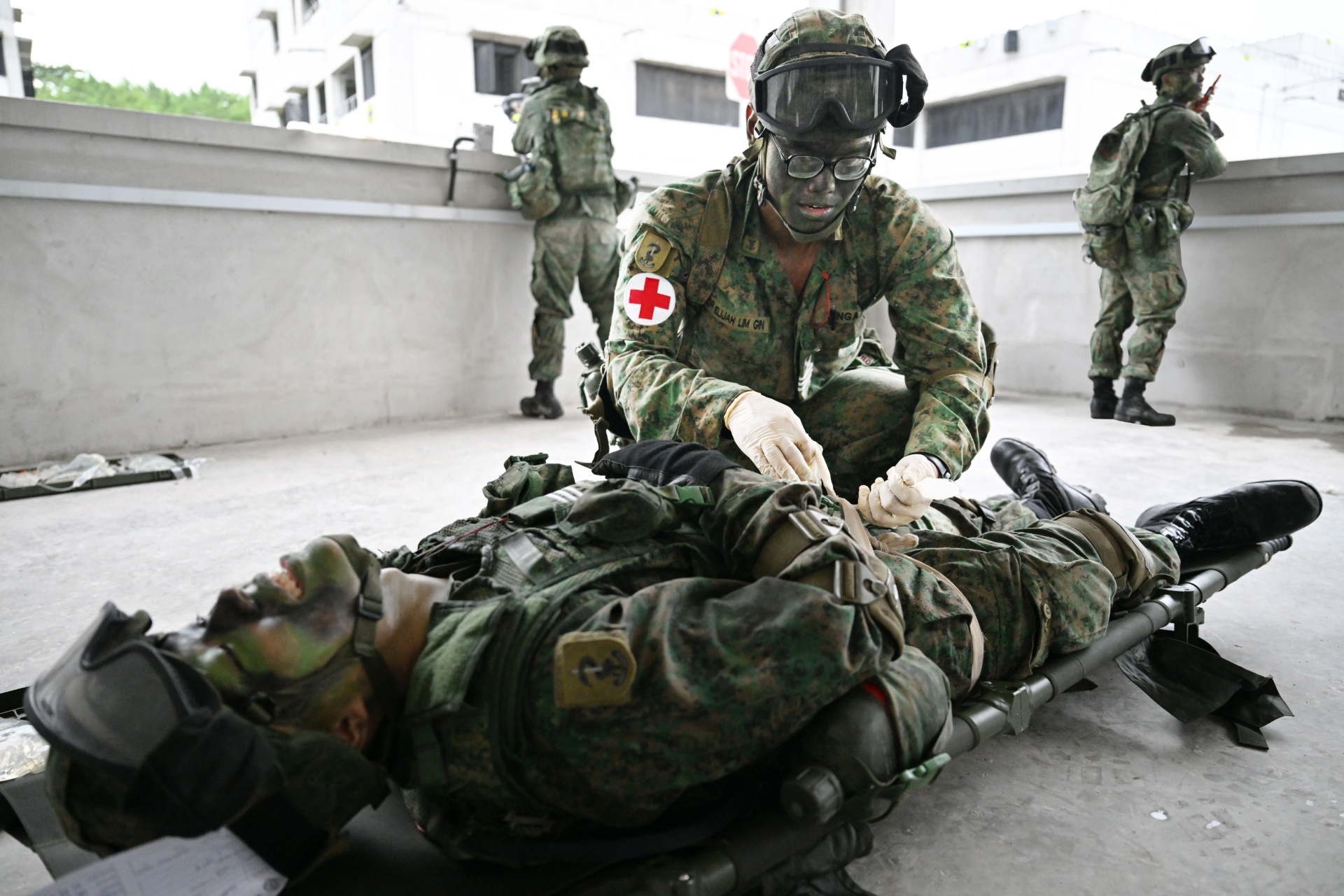MILESTONES
143 SQN wins Best Fighter Squadron 4 years in a row
29 Jun 2023
Resilience, dedication and an open reporting culture – these were what helped the squadron in their win.

Last November, the aircrew of 143 Squadron (SQN) spent six weeks honing their operational skills in India.
Four F-16C/D fighter aircraft from the squadron were deployed for the Joint Military Training (JMT) at Kalaikunda Air Force Station, after a two-year hiatus due to the COVID-19 pandemic.
During the exercise, aircrew of 143 SQN trained together with their counterparts from the Indian Air Force (IAF) in realistic and complex air-to-air and air-to-surface scenarios.


"The JMT helped us to figure out (different) ways to train against an adversary, because in Singapore, we're doing so with (only) our own fighters," explained F-16 fighter pilot CPT Rachel Lee, 30.
"We were able to speak with the IAF pilots to understand how they fight and train and then think about our own tactics and strategies."
Close coordination
Apart from the high-tempo training, one of the most memorable parts of the exercise for CPT Lee was seeing how the crew came together achieve mission success.
From the aircrew to the logistics crew, everyone pulled their weight and gave their best during the exercise, she said.

Air Force Engineer Military Expert (ME) 2 Kaarthigan S/O A Anbalahan agreed, adding that they had to be focused and dedicated at all times in order to get the aircraft ready for flights.
The 31-year-old said: "The working ties between the pilots and us are close – this is how we build trust and confidence. They have the confidence that we will ensure that the aircraft is safe for them to fly, and we communicate a lot."

Second family
These work bonds also led to close friendships, a necessity in a small squadron.
This is especially important as the aircrew often spend months training or being deployed overseas. To many of them, 143 SQN has become almost like a second family.
CPT Lee said: "One of the more unique challenges that I face as a fighter pilot is that we can spend up to four months overseas.
"But it's still quite manageable because we are such a close-knit group... This makes time away from Singapore slightly better."
ME2 Kaarthigan added: "We may be away from Singapore for quite a long time but we don't really feel it 'cos we have such a good relationship with our fellow colleagues."

Open reporting culture
But perhaps the main key to their winning streak is the open culture in 143 SQN. It means that anyone can voice their thoughts and feedback candidly, regardless of rank or seniority.
This culture is helpful especially when the aircrew are constantly working long hours in a high-tempo environment.
Commanding Officer Lieutenant Colonel (LTC) Joel Ng, 38, said: "(When) the supervisors and the command team are able to share our mistakes openly, this helps the junior aircrew realise that they can do so as well.
"Through this, we are able to nip any potential errors very quickly and not let it become a bad habit because, in flying, the right habit and patterns are very important."

Continuing their winning streak
While the Best Fighter Squadron win came as a rewarding surprise, the crew of 143 SQN is not losing sight of its goals – which is to train competent pilots and do their best to achieve mission success in everything that they are tasked to do.
LTC Ng said: "There was no real expectation of winning 'cos that was not the focus throughout the year… We will (just) continue to do what we are doing.
"The truth is that we are competing against many strong fighter units and it's anyone's game. But I believe that we are on the right track."
ALSO READ IN MILESTONES
-dsc_2181.jpg?sfvrsn=cf9c6464_2)
What you need to know about the new CMPB
14 Oct 2025
The new Central Manpower Base (CMPB) at Bukit Gombak officially opened its doors on 14 Oct, welcoming pre-enlistees, servicemen and the public alike to a state-of-the-art, one-stop hub for all things National Service (NS).

What it takes to become a medical officer
07 Oct 2025
This October, we celebrate the 100th batch of graduates from the Medical Officer Cadet Course. What does it take to become a military doctor? We uncover the highlights!

60 years on, their commitment remains strong
01 Jul 2025
The SAF celebrated its 60th anniversary on 1 Jul with a special SAF Day Parade and Combined Rededication Ceremonies across Singapore.


